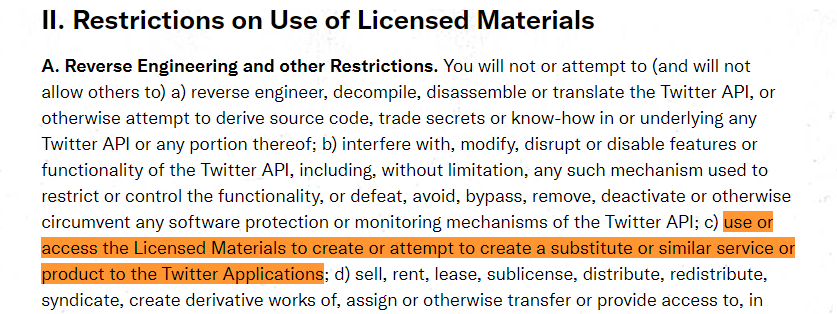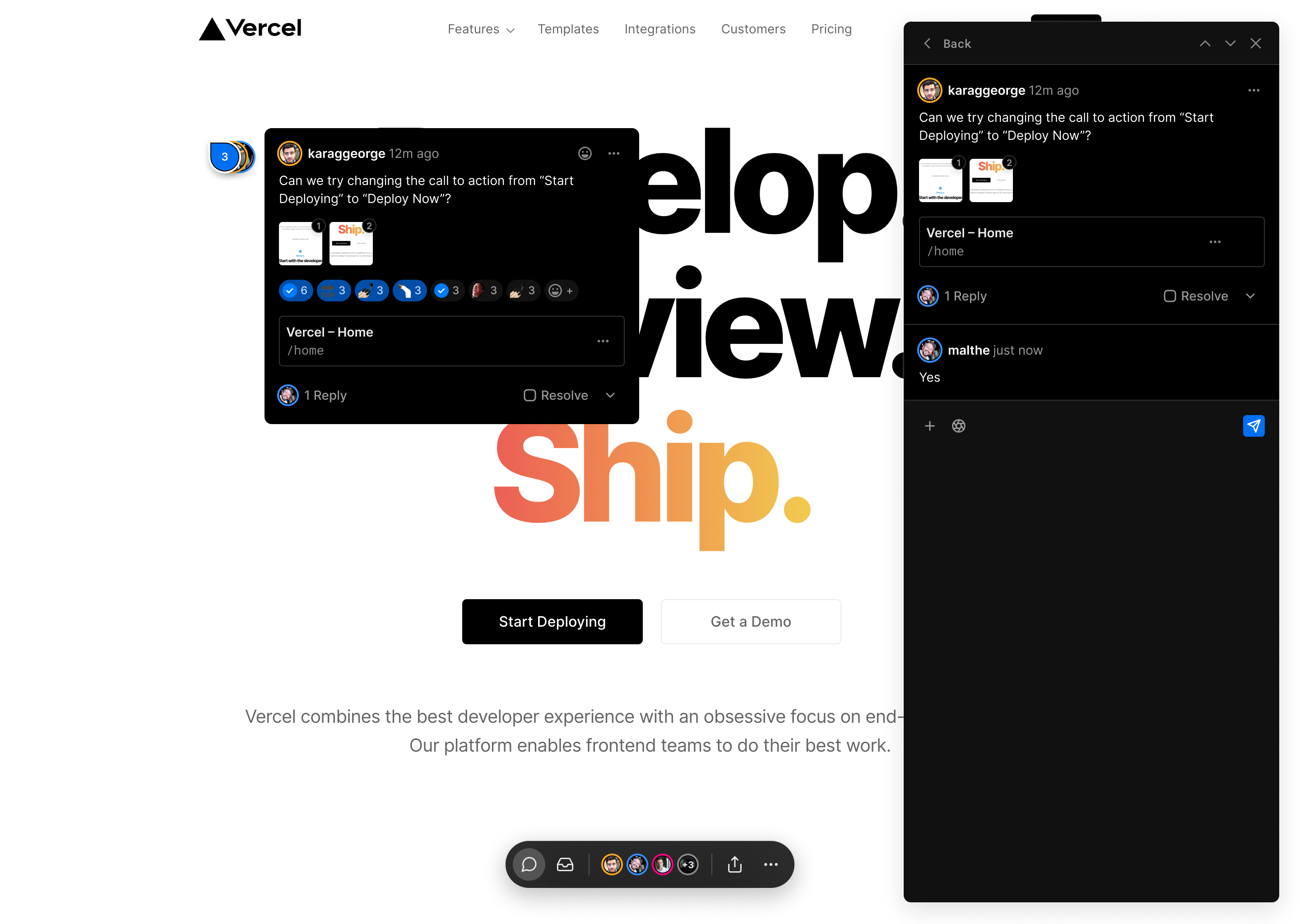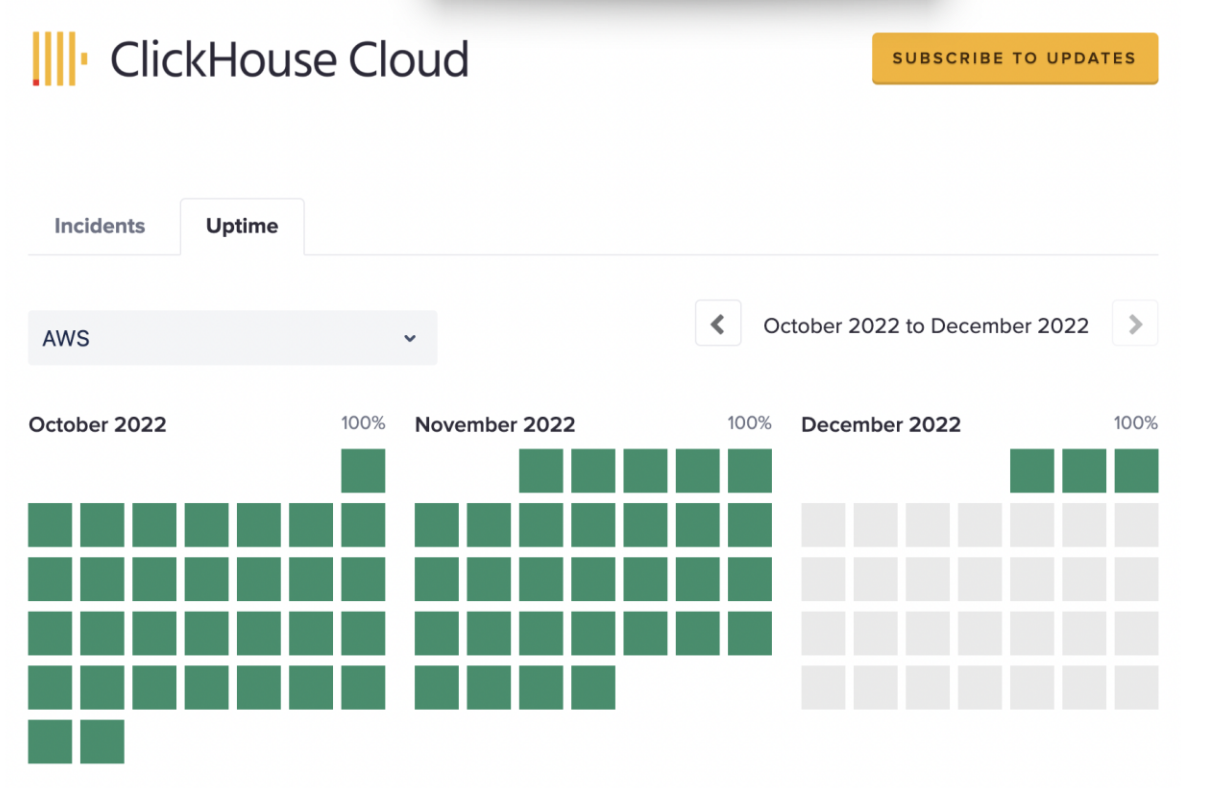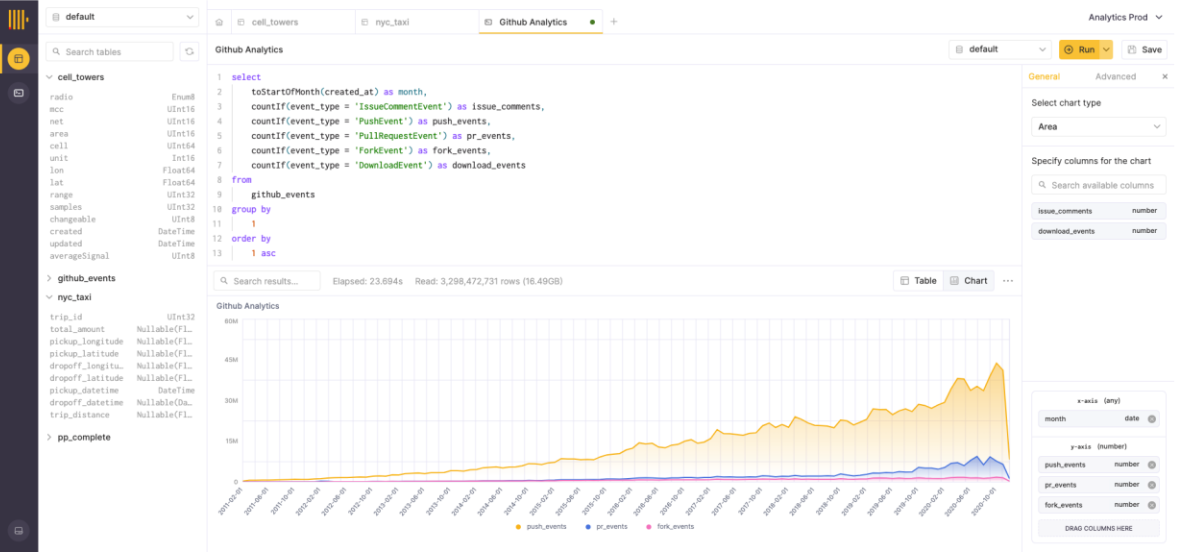Apple launches dev kit program for the Vision Pro
Ahead of the launch of its Vision Pro AR headset in early 2024, Apple’s beginning to seed developer kits to select eligible applicants.
The company announced this week that it’ll loan Vision Pro developer kits to approved account holders in the Apple Developer Program. Developers must submit an application for a kit, provide details about their team’s development skills and existing apps and agree to the terms and conditions before they’ll be considered.
In the terms, Apple, who reserves the right to see a list of staff authorized to work on the dev kit, forbids family, friends, roommates and household employees from accessing, viewing or handling the Vision Pro. In addition, the terms bar developers from public discussion of the Vision Pro in person or on social media.
In addition to the headset hardware, approved developers will receive help setting up the Vision Pro and onboarding, check-ins with Apple experts for UI design and development guidance and assistance troubleshooting any issues with their code.
Apple says that priority will be given to “applicants creating an app that takes advantage of visionOS features and capabilities” — “visionOS,” of course, referring to the OS that powers the Vision Pro. And all developers, regardless of when they’re approved, will have to return their development kit upon request.
Alongside the dev kit rollout, Apple said this week that it’ll hold Vision Pro developer labs in Cupertino, London, Munich, Shanghai, Singapore, and Tokyo, which folks can apply for on the company’s website. Apple also released a compatibility checklist for ensuring that apps are ready for visionOS.
The Vision Pro, which was unveiled at Apple’s annual WWDC conference in June, is expected to come to retail within the next few months priced at $3,499. The company’s first major product launch since the Apple Watch in 2014, the Vision Pro is nothing if not ambitious, packing an array of sensors and cameras that enable what Apple’s calling “spatial computing” experiences.
At launch, visionOS will feature apps — including Unity apps, which run natively on the Vision Pro — from Adobe (specifically Lightroom), Microsoft (Teams and Office), Netflix, Cisco (WebEx) Zoom and other major developers. There’s medical software for looking at renders of anatomy and an engineering app for visualizing things like physics phenomena, like airflow, on top of real-world objects.
Those apps and more will be hosted on a brand-new app store, which is launching simultaneously with the Vision Pro. Beyond apps, over 100 Apple Arcade titles will be available to play on VisionOS on “day one,” Apple says.
Addressing criticism, OpenAI will no longer use customer data to train its models by default
As the ChatGPT and Whisper APIs launch this morning, OpenAI is changing the terms of its API developer policy, aiming to address developer — and user — criticism.
Starting today, OpenAI says that it won’t use any data submitted through its API for “service improvements,” including AI model training, unless a customer or organization opts in. In addition, the company is implementing a 30-day data retention policy for API users with options for stricter retention “depending on user needs,” and simplifying its terms and data ownership to make it clear that users own the input and output of the models.
Greg Brockman, the president and chairman of OpenAI, asserts that some of these changes aren’t changes necessarily — it’s always been the case that OpenAI API users own input and output data, whether text, images or otherwise. But the emerging legal challenges around generative AI and customer feedback prompted a rewriting of the terms of service, he says.
“One of our biggest focuses has been figuring out, how do we become super friendly to developers?” Brockman told TechCrunch in a video interview. “Our mission is to really build a platform that others are able to build businesses on top of.”
Developers have long taken issue with OpenAI’s (now-deprecated) data processing policy, which they claim posed a privacy risk and allowed the company to profit off of their data. In one of its own help desk articles, OpenAI advises against sharing sensitive information in conversations with ChatGPT because it’s “not able to delete specific prompts from [users’ histories].”
In allowing customers to decline to submit their data for training purposes and offering increased data retention options, OpenAI’s trying to broaden its platform’s appeal, clearly. It’s also seeking to massively scale.
To that last point, in another policy change, OpenAI says that it’ll remove its current pre-launch review process for developers in favor of a largely automated system. Via email, a spokesperson said that the company felt comfortable moving to the system because “the overwhelming majority of apps were approved during the vetting process” and because the company’s monitoring capabilities have “significantly improved” since this time last year.
“What’s changed is that we’ve moved from a form-based up front vetting system, where developers wait in a queue to be approved on their app idea in concept, to a post-hoc detection system where we identify and investigate problematic apps by monitoring their traffic and investigating as warranted,” the spokesperson said.
An automated system lightens the load on OpenAI’s review staff. But it also — at least in theory — allows the company to approve developers and apps for its APIs in higher volume. OpenAI is under increasing pressure to turn a profit after a multibillion-dollar investment from Microsoft. The company reportedly expects to make $200 million in 2023, a pittance compared to the more than $1 billion that’s been put toward the startup so far.
Addressing criticism, OpenAI will no longer use customer data to train its models by default by Kyle Wiggers originally published on TechCrunch
Twitter officially bans third-party clients after cutting off prominent devs
After cutting off prominent app makers like Tweetbot and Twitterific, Twitter today quietly updated its developer terms to ban third-party clients altogether.
Spotted by Engadget, the “restrictions” section of Twitter’s 5,000-some-word developer agreement was updated with a clause prohibiting “use or access the Licensed Materials to create or attempt to create a substitute or similar service or product to the Twitter Applications.” Earlier this week, Twitter said that it was “enforcing long-standing API rules” in disallowing clients access to its platform but didn’t cite which specific rules developers were violating. Now we know — retroactively.
As Engadget notes, Twitter clients are a part of Twitter history — Twitterific was created before Twitter had a native iOS app of its own. And they’ve gained a larger following in recent years, thanks in part to their lack of ads.
Twitter’s attitude toward third-party clients has long been permissive and even supportive, with the company going so far as to remove a section from its developer terms that discouraged devs from replicating its core service. But that seems to have changed under CEO Elon Musk’s leadership.

Image Credits: Twitter
The decision seems unlikely to foster goodwill toward Twitter at a time when the platform faces challenges on a number of fronts. In a blog post, Twitterrific’s Sean Heber called Twitter “increasingly capricious” and a company he “no longer recognize[d] as trustworthy nor want to work with any longer.” Matteo Villa, the developer of Fenix, in an interview with Engadget called the lack of communication “insulting.” (Twitter has no communications department at present.)
Twitter is under immense pressure to turn a profit — or at least break even — as advertisers flee the platform, spurred by unpredictable, fast-changing content policies. The company, which has $12.5 billion in debt, is on the hook for $300 million in its first interest payment and has lost an estimated $4 billion in value since Musk acquired it at the end of October 2022. Fidelity recently slashed the value of its stake in Twitter by 56%.
Cutbacks at Twitter abound. Some employees are bringing their own toilet paper to work after the company reduced janitorial services, the New York Times reported, and Twitter has stopped paying rent for several of its offices. Musk has elsewhere attempted to save around $500 million in costs unrelated to labor, shutting down a data center and launching a fire sale after putting office items up for auction in a bid to recoup costs.
Twitter’s also heavily pushing its Twitter Blue plan (now with an annual option), aiming to make it a profit driver. It plans to lift its ban on political ads, chasing after campaign dollars in the 2024 U.S. elections. And the company is reportedly considering selling usernames through online auctions.
Twitter officially bans third-party clients after cutting off prominent devs by Kyle Wiggers originally published on TechCrunch
Vercel makes it easier to collaborate on preview deployments
Vercel, the popular front-end development platform, now allows you to comment directly on preview deployments, using a highly visual commenting system that is similar to Figma’s. The company had been testing this feature since September and it’s now generally available to all users.
As Vercel co-founder and CEO Guillermo Rauch told me, the idea here was to allow easier collaboration on top of the company’s existing development infrastructure, all while broadening the number of people who could get involved in the process.
“The big vision behind this was that we wanted to do for front-end development what Figma and Google Docs did for enabling this multiplayer collaboration on top of existing ways that people were working, whether it was documents or image files,” he said.
One of Vercel’s earliest innovations was that whenever there was a pull request, Vercel would give you a URL that would show the current state of the front-end application. This new commenting system builds on top of that by adding a new UI element to these previews that allows you to add comments and see existing ones. Because these previews come directly from Vercel, the company can integrate this natively, without the need for a browser extension (though there is also a Chrome extension to enable an additional feature that allows you to add screenshots to your comments).
For the most part, the new commenting system is pretty straightforward. There are emoji reactions and all of the other features you’d expect from a commenting system in 2022, including, for example, an inbox that aggregates the most recent comments. As Vercel CTO Malte Ubl told me, the company at one point even enabled the ability to doodle on a page. That didn’t make it into the final product, but it may make it into a future release.
Ubl noted that the tool’s beta testers tended to use it in bursts. “You don’t necessarily have something that you want to review in this way every single day. That’s not the way developers work,” he said. “There might be changes that are not graphical at all. Then you don’t need this product and your pull request review is perfectly fine. But then, companies ramp up to launch and we see them in our statistics going from a comment thread here or there to 100 a day.”
The new commenting feature is rolling out to all Vercel users today.
Vercel makes it easier to collaborate on preview deployments by Frederic Lardinois originally published on TechCrunch
Common Fate wants to make it easier to manage privileged access for developers
Privileged access management (aka PAM) provides the ability to control access to sensitive parts of your technology environment. Rather than giving everyone access to these resources (or conversely, no one), you should be able to apply permissions granularly.
But it is challenging without the right tools. Common Fate, an Australian startup from a couple of former cyber security consultants, wants to help with an open source tool and an early access cloud service.
Today, the company announced a $3.1 million seed investment.
Co-founder Fraser Ricupero says the company provides engineers with quick access to the tools they need. “We exist to ensure that employees in organizations, namely, engineering teams and security professionals within the organization, can get access to the correct level of internal services,” he said.
That could be cloud infrastructure services or critical applications like 1Password, GitHub, Salesforce and other SaaS applications. “And it’s about getting the correct level of access that they need to do their job when they need it and in a secure fashion,” he said.
Co-founder Chris Norman says that when they were working as consultants prior to starting the company, the two founders saw the need for a product like this. “We’ve seen through our own backgrounds as consultants, a real proliferation of internal access and a proliferation of over privileged access and the folks that we’re talking about, these engineers, they need this access at a very high velocity to build applications and serve users for the digital products that they’re building,” Norman said.
He says they differ from other PAM products on the market because of their focus on developers. “We differ in the sense that we are developer- and practitioner- first and developer-focused, and for us this means directly integrating with internal command line tooling, and a huge focus on command line user experience,” he said.
The company has an open source tool called Granted, and it’s launching an early access program for the SaaS version of the product.
With 7 employees, the plan is to keep it lean for the time being with just one open rec at the moment for a community success engineer, but when it comes to hiring, the founders understand the importance of diversity. “We are very much aware of those issues in technology, and seemingly these issues are considerably more pronounced in cloud security,” Ricupero said.
“From the research that we’ve done internally, we see that diverse teams perform better quite simply. And one of the hiring criteria [for the open role] is we need to ask ourselves is the candidate bringing a new perspective and background to our team, or is it just more of the same? So obviously, we’re looking for a diverse mix of talented people within our company,” he said.
Today’s $3.1 million investment was led by Work-Bench with participation from Haystack Ventures and Essence VC.
Common Fate wants to make it easier to manage privileged access for developers by Ron Miller originally published on TechCrunch
Snyk scores another $196M as valuation drops 12% to $7.4B
Snyk hasn’t been afraid to take money over the years, scoring an ever larger investment haul with each passing round, and with each one has come a correspondingly large valuation increase. This time, that particular streak ended, but Snyk snagged another $196.5 million investment with its valuation down about 12% to $7.4 billiion since its previous round in September 2021.
That previous round was $585 million with $300 million in primary funding and the remaining $230 million in secondary funding to pay off early investors and employees, anxious to see some return on their equity. The primary money came on an $8.5 billion valuation, $1.1 billion higher than today’s round.
It’s worth noting, however, that even with that down round, the previous round was up $3.8 billion over the March round. You can see the company’s ascent up until this round in the chart below:

Snyk CEO Peter McKay says getting the right terms was more essential than increasing the valuation, especially in the current market. “So, it was more important that we get the right terms than that I absolutely have to get to $8.6 billion. If the market is saying you’re at 7.4, then we’re at 7.4,” he said.
Part of it is that even though the company is growing, the market has changed since the last round. “Despite the headwinds that I think everybody sees in the market, we were able to still grow over 100% in new logos and in revenue, so we’re very pleased,” he said.
The company still has most of the money from last year’s round in the bank, but they saw an opportunity to get more cash, which could help them as they try to grow the platform, both organically and via acquisitions.
“What you do with a market like this is you focus on efficiency in your business, you focus on getting to free cash flow faster. You make sure your balance sheet is as strong as it can be. And you be opportunistic,” he said.
He sees that Snyk’s market around developer security remains fragmented, and he sees an opportunity to consolidate by buying companies when it makes sense and taking advantage of what he sees as a very large TAM. McKay says that the company has tripled in size since its last round of funding from 400 employees to 1200, but he sees ways for the company to be more efficient for investors in other ways, shooting to get to cash flow break even by 2024 as a prime example.
Most security startups either grow into a platform or they get absorbed by one, and Snyk apparently wants to be a platform player at this point. This cash should help the company as it waits out the stock market for a more friendly IPO environment.
“We really haven’t set any time. We think that there’ll be a wave [of IPOs] in the first half of 2023. We’ll watch and see how they do and based on that, maybe we’ll make a decision on what we do…I don’t even want to speculate on a time because who knows when that is? Nobody has that answer,” he said.
Today’s investment was funded by new investors Evolution Equity Partners, G Squared, Irving Investors and Qatar Investment Authority. Existing investors Boldstart Ventures, Sands Capital and Tiger Global also participated. The company has now raised $1.075 billion.
Snyk scores another $196M as valuation drops 12% to $7.4B by Ron Miller originally published on TechCrunch
ClickHouse launches ClickHouse Cloud, extends its Series B
Since its launch as an open-source project by Yandex in 2016, ClickHouse has become one of the leading databases for online analytical processing (OLAP), allowing businesses to quickly generate ad-hoc reports over very large datasets. In 2021, Yandex spun off ClickHouse into its own company and joined an initial $50 million Series A funding round led by Index Ventures and Benchmark Capital. Two months later, Coatue and Altimeter led the company’s Series B round, with participation from Index Ventures, Benchmark, Lightspeed and Redpoint. Now, ClickHouse is extending this round with fresh capital from Thrive Capital.
The company, which is headquartered in San Francisco and has a European engineering base in Amsterdam, did not disclose the exact size of Thrive’s investment, but ClickHouse CEO Aaron Katz stated that it was an “eight-figure round”.
“ClickHouse offers the most efficient database for fast and large-scale analytics,” said Avery KIemmer, an investor at Thrive Capital. “We have long admired this team, and are excited to partner with them as they launch ClickHouse Cloud to an even wider audience.”
In addition to announcing the new funding, the company also today launched ClickHouse Cloud, a fully managed, SOC 2 Type 2-compliant cloud-hosted version of its database that is now available in the AWS Marketplace. Support for Google Cloud Platform and Microsoft’s Azure cloud is in the works. The company first launched this service into beta a few months ago and is now ready to launch it into GA.
Maybe because of its origins within Yandex, ClickHouse has flown a bit under the press’ radar, but it’s currently in use by the likes of Cloudflare, Uber, eBay, Comcast and Cisco. It’s also very hard to have a conversation about databases and analytics these days without the company being referenced in some form or another.
To run ClickHouse, Yandex brought on former Elastic CRO and Salesforce exec Aaron Katz as the company’s co-founder and CEO. Unlike other open-source companies, the ClickHouse team decided to skip past launching enterprise versions or go for an open-core model with proprietary features and skip right to a cloud-hosed version. Katz explained that this decision was based on the previous experience of the founding team.
“Trying to develop both on-premise software and sell support and stand up an enterprise-grade cloud service can be challenging to do simultaneously,” he said. “We believe the future is in managed services: serverless cloud offerings that are cloud agnostic and multi-cloud — that are secure and reliable and scalable, resource efficient and highly performant. So we developed ClickHouse Cloud and we launched it earlier this year as a beta state and got overwhelmingly positive response from the market.”
In October, ClickHouse acquired Arctype, a cross-platform GUI for managing and querying databases (think a modern phpMyAdmin). Arctype itself only launched half a year before that, so ClickHouse moved quickly here and as Katz noted, with a full war chest, we’ll likely see the company make more of these smaller acquisitions in the future. The team has now re-written Arctype as a native offering inside of ClickHouse Cloud.
As ClickHouse VP of Product Tanaya Bragin noted, the company also tuned the software to increase performance and added a lower pricing tier for developers who want to get started with the service (after a free 30-day trial). And because there is still a talent crunch for database experts, ClickHouse is also launching ClickHouse Academy with a catalog of free courses and recordings of its own onboarding workshops.
Bragin also stressed that current users of the ClickHouse open-source version will be able to easily migrate to ClickHouse Cloud. From the application’s perspective, the two versions are equivalent. The advantage of the hosted version, of course, is that users won’t have to manage a complex database system themselves. The system will automatically handle sharding, replication and upgrading. Auto-scaling, too, is built into ClickHouse Cloud. “The separation of storage and compute is an important accomplishment that the customers benefit from, which makes it more resource efficient and cost effective than running it on your own,” Katz added.
The ClickHouse team plans to use the new funding on expanding its product and engineering teams. Given its focus on product-led growth (PLG), the company doesn’t plan to focus too much on expanding its marketing efforts for the time being.
“We’re really pursuing this PLG distribution model, where you can go to ClickHouse Cloud today, you can create your own free trial and we give you free credits,” Katz said. “It’s totally frictionless. You never have to talk to anybody and sales. You can evaluate the service on your own. If you like what your experiencing, you can add your credit card and pay as you go monthly with totally transparent, consumption-based billing. If we get that right — and the feedback from these early 100+ customers has been very encouraging. Then we won’t need to have a really expensive sales and marketing engine, because with the PLG motion, the product will distribute itself.”
ClickHouse launches ClickHouse Cloud, extends its Series B by Frederic Lardinois originally published on TechCrunch
ClickHouse launches ClickHouse Cloud, extends its Series B
Since its launch as an open-source project by Yandex in 2016, ClickHouse has become one of the leading databases for online analytical processing (OLAP), allowing businesses to quickly generate ad-hoc reports over very large datasets. In 2021, Yandex spun off ClickHouse into its own company and joined an initial $50 million Series A funding round led by Index Ventures and Benchmark Capital. Two months later, Coatue and Altimeter led the company’s Series B round, with participation from Index Ventures, Benchmark, Lightspeed and Redpoint. Now, ClickHouse is extending this round with fresh capital from Thrive Capital.
The company, which is headquartered in San Francisco and has a European engineering base in Amsterdam, did not disclose the exact size of Thrive’s investment, but ClickHouse CEO Aaron Katz stated that it was an “eight-figure round”.
“ClickHouse offers the most efficient database for fast and large-scale analytics,” said Avery KIemmer, an investor at Thrive Capital. “We have long admired this team, and are excited to partner with them as they launch ClickHouse Cloud to an even wider audience.”
In addition to announcing the new funding, the company also today launched ClickHouse Cloud, a fully managed, SOC 2 Type 2-compliant cloud-hosted version of its database that is now available in the AWS Marketplace. Support for Google Cloud Platform and Microsoft’s Azure cloud is in the works. The company first launched this service into beta a few months ago and is now ready to launch it into GA.
Maybe because of its origins within Yandex, ClickHouse has flown a bit under the press’ radar, but it’s currently in use by the likes of Cloudflare, Uber, eBay, Comcast and Cisco. It’s also very hard to have a conversation about databases and analytics these days without the company being referenced in some form or another.
To run ClickHouse, Yandex brought on former Elastic CRO and Salesforce exec Aaron Katz as the company’s co-founder and CEO. Unlike other open-source companies, the ClickHouse team decided to skip past launching enterprise versions or go for an open-core model with proprietary features and skip right to a cloud-hosed version. Katz explained that this decision was based on the previous experience of the founding team.
“Trying to develop both on-premise software and sell support and stand up an enterprise-grade cloud service can be challenging to do simultaneously,” he said. “We believe the future is in managed services: serverless cloud offerings that are cloud agnostic and multi-cloud — that are secure and reliable and scalable, resource efficient and highly performant. So we developed ClickHouse Cloud and we launched it earlier this year as a beta state and got overwhelmingly positive response from the market.”
In October, ClickHouse acquired Arctype, a cross-platform GUI for managing and querying databases (think a modern phpMyAdmin). Arctype itself only launched half a year before that, so ClickHouse moved quickly here and as Katz noted, with a full war chest, we’ll likely see the company make more of these smaller acquisitions in the future. The team has now re-written Arctype as a native offering inside of ClickHouse Cloud.
As ClickHouse VP of Product Tanaya Bragin noted, the company also tuned the software to increase performance and added a lower pricing tier for developers who want to get started with the service (after a free 30-day trial). And because there is still a talent crunch for database experts, ClickHouse is also launching ClickHouse Academy with a catalog of free courses and recordings of its own onboarding workshops.
Bragin also stressed that current users of the ClickHouse open-source version will be able to easily migrate to ClickHouse Cloud. From the application’s perspective, the two versions are equivalent. The advantage of the hosted version, of course, is that users won’t have to manage a complex database system themselves. The system will automatically handle sharding, replication and upgrading. Auto-scaling, too, is built into ClickHouse Cloud. “The separation of storage and compute is an important accomplishment that the customers benefit from, which makes it more resource efficient and cost effective than running it on your own,” Katz added.
The ClickHouse team plans to use the new funding on expanding its product and engineering teams. Given its focus on product-led growth (PLG), the company doesn’t plan to focus too much on expanding its marketing efforts for the time being.
“We’re really pursuing this PLG distribution model, where you can go to ClickHouse Cloud today, you can create your own free trial and we give you free credits,” Katz said. “It’s totally frictionless. You never have to talk to anybody and sales. You can evaluate the service on your own. If you like what your experiencing, you can add your credit card and pay as you go monthly with totally transparent, consumption-based billing. If we get that right — and the feedback from these early 100+ customers has been very encouraging. Then we won’t need to have a really expensive sales and marketing engine, because with the PLG motion, the product will distribute itself.”
ClickHouse launches ClickHouse Cloud, extends its Series B by Frederic Lardinois originally published on TechCrunch
Amazon announces Eventbridge Pipes, a simpler way to connect events from multiple services
As developers use multiple Amazon services to compose an application, they typically have to write glue code to communicate between the different services, which can be a time-consuming manual exercise. But today at AWS re:Invent in Las Vegas, the company announced an easier way to connect AWS services called Amazon Eventbridge Pipes.
Werner Vogels, chief technology officer at Amazon introduced the new feature today at his keynote address, saying it brings the simplicity of pipes to the process. “So many of our customers who want to actually build these sort of connections between different services, have to write a little glue code. And as always, I kept thinking why can’t we just use the pipes principle here? So I’m happy to announce today, Eventbridge Pipes, which allow you to easily stitch AWS services together,” he said.
It’s highly flexible, allowing developers to use a lambda function or an API, or whatever they are using to manipulate the date inside the pipe before it reaches the consumer. “So the idea is that you should no longer have to to write the glue code because you can easily stitch these services together. And if you would want to actually manipulate the events before they reach the consumer, you can actually provide a lambda function or a point-to-step function or API gateway to actually run some code to manipulate the events that are flowing through your pipe,” he explained
As the company wrote in a blog post announcing the new feature, “With Amazon EventBridge Pipes, you can integrate supported AWS and self-managed services as event producers and event consumers into your application in a simple, reliable, consistent and cost-effective way.”
Eventbridge Pipes is now generally available in all regions, accord to AWS.
Amazon announces Eventbridge Pipes, a simpler way to connect events from multiple services by Ron Miller originally published on TechCrunch





